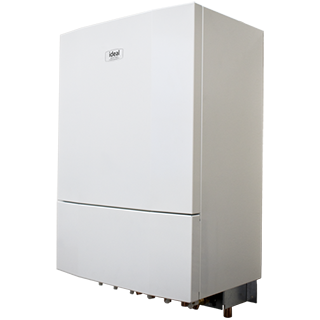District heating doesn’t make the news much, but it should have a much higher profile.
In the years ahead district heating systems, also known as heat networks, could be heating millions of UK homes, so isn’t it time we got to know them better?
District heating does away with individual boilers in each property.
Instead, heat is supplied to buildings from a central source, providing the possibility to boost efficiency and reduce heating costs for consumers together with heating technologies at the central source that can cut carbon emissions.
Essentially a heat network delivers thermal energy, in the form of hot water, from a central source to end users through a network of insulated pipes.
What makes a heat network?
Every district heating system can be broken down into three main elements:
The energy centre sits at the heart of a heat network, heating the hot water that is distributed around the system.
Currently, most of the 14,000 or so heat networks in the UK are powered by gas boilers, but one of their key advantages is that they are energy agnostic; that is, they can use almost any heat source1.
That includes air source and ground source heat pumps, biomass boilers, electric boilers and Combined Heat and Power systems.
Waste heat generated by power stations and industrial sites can also be recovered and fed into heat networks, generating even more efficiencies. There are even plans to harness the heat from the London Underground to heat properties in the capital.
The energy centre connects to the distribution network, the series of insulated pipes which delivers hot water to the end users.
Each property then has a Heat Interface Unit (HIU), which transfers the heat from the distribution network to the end user’s property.
The HIU is roughly the same size and shape as a combi boiler and it works using heat exchangers to transfer the thermal energy from the hot water in the distribution network to the water in the property’s central heating system, or to generate the hot water for the property. To find out more about Ideal Heating POD Heat Interface Unit (HIU) click here.
This avoids the need for individual buildings or properties to have their own heat source, such as a gas boiler.
The time has come
The government has just published an investigation into the opportunities for heat networks across the country, which concluded: “It is a certainty that heat networks will be vital to making net zero a reality in the UK.
“They are a proven, cost-effective way of providing reliable, efficient, low carbon heat at a fair price to consumers, while supporting local regeneration.”
The report also forecasts that, while heat networks currently supply only around 2% of heat demand for buildings in the UK, they have the potential to provide up to 20% by the 2050 deadline for the UK to achieve its target of net zero.
And the government is putting its money where its mouth is.
To support the development of more heat networks, it has announced a new round of heat network funding for England, worth £270m.
The Green Heat Network Fund is capital grant fund open to the public, private and third sector, which launches in April 2022 and will run until 2025.
So, it seems clear that the stars have aligned for district heating, whose time has finally come!
We’d love to hear your views about district heating and help guide you through your next heat network project, from commissioning to conclusion, so please do get in touch.


